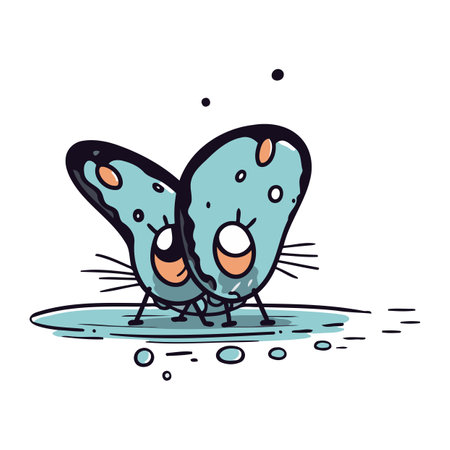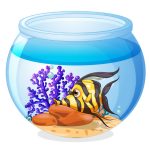1. Understanding the Nitrogen Cycle
If youre new to fishkeeping, you may have heard about the nitrogen cycle but might not fully understand why its so important. The nitrogen cycle is a natural biological process that helps maintain a healthy environment for your fish by breaking down harmful waste products.
What Is the Nitrogen Cycle?
The nitrogen cycle is the process by which beneficial bacteria convert toxic waste in your aquarium into less harmful substances. Fish produce waste in the form of ammonia, which can be extremely toxic to them if it builds up in the water. Fortunately, beneficial bacteria help convert ammonia into nitrite and then into nitrate, making the water safer for your aquatic pets.
The Three Stages of the Nitrogen Cycle
The nitrogen cycle consists of three main stages:
| Stage | Process | Effect on Aquarium |
|---|---|---|
| Ammonia Production | Fish waste, uneaten food, and decaying plants release ammonia (NH3). | Ammonia is highly toxic to fish and can cause stress or death if not controlled. |
| Nitrite Formation | Beneficial bacteria (Nitrosomonas) convert ammonia into nitrite (NO2-). | Nitrite is also toxic but slightly less harmful than ammonia. |
| Nitrate Formation | Another type of beneficial bacteria (Nitrobacter) converts nitrite into nitrate (NO3-). | Nitrate is much less toxic but should still be kept at low levels with regular water changes. |
Why Is Cycling Your Aquarium Important?
Cycling your aquarium ensures that beneficial bacteria establish themselves before you introduce fish. Without these bacteria, ammonia and nitrite levels can quickly rise to dangerous levels, leading to stressed or sick fish. A properly cycled tank creates a stable environment where fish can thrive.
Signs That Your Tank Is Not Cycled Yet
- Cloudy water due to bacterial blooms
- High ammonia or nitrite levels when tested with a water test kit
- Fish showing signs of stress like gasping at the surface or erratic swimming
How Long Does the Cycling Process Take?
The cycling process typically takes anywhere from 4 to 8 weeks, depending on factors such as tank size, temperature, and whether live plants or bacteria boosters are used. Patience is key—rushing this process can lead to unhealthy conditions for your fish.
Now that you understand the basics of the nitrogen cycle, youre ready to learn how to properly cycle your aquarium before adding fish!
2. The Three Stages of Cycling
When setting up a new aquarium, understanding the nitrogen cycle is crucial for maintaining a healthy environment for your fish. This cycle consists of three main stages: ammonia, nitrite, and nitrate. Each stage plays a key role in water chemistry and the overall well-being of your aquatic pets.
Stage 1: Ammonia
The nitrogen cycle begins with the introduction of waste into the tank. Fish produce waste through respiration and excretion, while uneaten food and decaying plant matter also contribute to ammonia buildup.
How Ammonia Affects Your Tank
- Highly toxic to fish, even at low levels
- Can cause stress, gill damage, and even death
- Encourages beneficial bacteria growth that will later convert ammonia into nitrite
Managing Ammonia Levels
- Use an aquarium test kit to monitor ammonia levels regularly
- Avoid overfeeding to reduce waste buildup
- Add beneficial bacteria supplements to speed up cycling
- Perform partial water changes if ammonia spikes dangerously high
Stage 2: Nitrite
As beneficial bacteria (Nitrosomonas) develop in your tank, they begin converting toxic ammonia into nitrite. While nitrite is less harmful than ammonia, it is still dangerous to fish.
The Impact of Nitrite on Fish
- Affects oxygen transport in fish blood (can lead to “brown blood disease”)
- Causes stress and weakens immune systems
- Toxic at elevated levels but necessary for completing the cycle
Controlling Nitrite Levels
- Continue testing water frequently to track nitrite levels
- Avoid adding new fish until nitrites drop to zero
- Add live plants to absorb excess nitrogen compounds
- If nitrites are high, perform small water changes rather than large ones to prevent disrupting bacterial colonies
Stage 3: Nitrate
The final stage of the nitrogen cycle occurs when another type of bacteria (Nitrobacter) converts nitrite into nitrate. Nitrate is much less toxic but should still be kept under control.
Nitrate and Its Effects on Water Quality
- Nitrate is not immediately harmful but can cause long-term stress at high levels
- Poor water quality due to excessive nitrate can lead to algae blooms and fish health issues
- Aquatic plants help absorb some nitrates, naturally improving water conditions
Nitrate Management Strategies
- Aim to keep nitrate levels below 20-40 ppm for freshwater tanks and under 5 ppm for reef tanks
- Siphon out debris during regular tank maintenance to prevent waste accumulation
- Add live plants or use chemical filtration media designed to remove nitrates if needed
- The best way to control nitrates: perform routine water changes (usually 20-30% weekly)
Nitrogen Cycle Summary Table
| Nitrogen Compound | Toxicity Level | Main Source | Bacteria That Process It | Main Solution for Control |
|---|---|---|---|---|
| Ammonia (NH₃/NH₄⁺) | Highly Toxic! | Fish waste, uneaten food, decaying matter | Nitrosomonas bacteria convert it into nitrite | Avoid overfeeding, use beneficial bacteria supplements, monitor with test kits |
| Nitrite (NO₂⁻) | Toxic! | Bacteria breaking down ammonia | Nitrobacter bacteria convert it into nitrate | Add live plants, avoid overstocking fish, perform small water changes if needed |
| Nitrate (NO₃⁻) | Mildly Toxic at High Levels! | Bacteria breaking down nitrites | No further breakdown without specialized filtration or plants | Regular water changes, add plants, or use chemical filtration media |
The nitrogen cycle is an essential process that ensures a safe environment for your fish. By understanding each stage—ammonia, nitrite, and nitrate—you can take proactive steps to maintain stable water conditions and keep your aquarium thriving.

3. Fishless Cycling vs. Fish-In Cycling
When setting up a new aquarium, you have two main options for cycling: fishless cycling and fish-in cycling. Both methods establish beneficial bacteria to process harmful waste, but they differ in approach, time, and impact on fish.
Fishless Cycling
Fishless cycling is the preferred method for many aquarists because it allows you to establish a fully cycled tank before introducing fish. This approach involves adding an ammonia source (such as pure ammonia or decomposing fish food) to feed beneficial bacteria without exposing live fish to toxic conditions.
Pros of Fishless Cycling
- No fish are exposed to harmful ammonia or nitrites.
- You can control ammonia levels precisely.
- A fully cycled tank is ready for fish, reducing stress and health risks.
Cons of Fishless Cycling
- Takes several weeks to complete.
- Requires monitoring and patience before adding fish.
- Might seem less engaging since there are no fish in the tank initially.
Fish-In Cycling
Fish-in cycling involves adding hardy fish to a new aquarium while beneficial bacteria gradually develop. Since fish produce ammonia through waste, the bacteria colonies grow naturally over time. However, this method requires frequent water changes to keep ammonia and nitrite levels low enough to prevent harming the fish.
Pros of Fish-In Cycling
- You can enjoy having fish in your tank right away.
- Bacteria grow with natural ammonia sources from fish waste.
Cons of Fish-In Cycling
- Puts fish at risk of ammonia and nitrite poisoning.
- Requires frequent water changes and close monitoring.
- Certain species may not tolerate unstable water conditions well.
Which Method Is Best for You?
The best method depends on your patience level and concern for fish welfare. If you want to ensure a safe environment before adding fish, fishless cycling is ideal. If youre eager to add fish immediately and willing to do extra maintenance, fish-in cycling can work but requires careful management.
| Cycling Method | Main Benefit | Main Drawback |
|---|---|---|
| Fishless Cycling | No harm to fish, full cycle before adding livestock | Takes longer, requires monitoring |
| Fish-In Cycling | Adds fish immediately, more interactive | Puts fish at risk, requires frequent water changes |
No matter which method you choose, testing water parameters regularly and being patient will help ensure a successful nitrogen cycle and a healthy aquarium for your aquatic pets.
4. Steps to Start Cycling Your Aquarium
Discover a step-by-step guide to properly cycling your tank and ensuring beneficial bacteria establish successfully. Setting up a healthy nitrogen cycle is crucial for keeping your fish safe and maintaining a balanced aquarium environment.
Step 1: Set Up Your Tank
Before starting the cycling process, make sure your aquarium is fully set up with all necessary equipment:
- Install the filter, heater (if needed), and air pump.
- Add substrate, decorations, and any live plants.
- Fill the tank with dechlorinated water.
Step 2: Choose a Cycling Method
There are two main ways to cycle an aquarium: fishless cycling and fish-in cycling. Fishless cycling is recommended as it avoids stressing or harming fish during the process.
| Cycling Method | Description | Pros | Cons |
|---|---|---|---|
| Fishless Cycling | Add ammonia manually to feed beneficial bacteria. | Safer for fish, allows full bacterial growth before adding livestock. | Takes longer to complete. |
| Fish-In Cycling | Add hardy fish that produce waste to start the cycle. | Cycle starts immediately with live fish. | Can stress or harm fish if ammonia and nitrite levels spike. |
Step 3: Add Ammonia Source
If you choose fishless cycling, you need to introduce ammonia into the tank to feed beneficial bacteria. You can use:
- Pure ammonia: Available at hardware stores (ensure it has no additives).
- Fish food: As it decomposes, it releases ammonia.
- Live plants: They help introduce some beneficial bacteria naturally.
Step 4: Monitor Water Parameters
Regularly test your water using an aquarium test kit to track ammonia, nitrites, and nitrates. The goal is:
- Ammonia levels rise first, then drop as bacteria convert it into nitrites.
- Nitrites increase, then decrease as another type of bacteria converts them into nitrates.
- Nitrates should be present, but kept low through water changes.
Step 5: Perform Partial Water Changes if Necessary
If ammonia or nitrite levels become dangerously high in a fish-in cycle, perform small water changes (25-30%) to keep levels manageable without disrupting bacterial growth.
Step 6: Wait for Complete Cycle
The cycling process can take anywhere from 2-8 weeks. Your tank is fully cycled when:
- Ammonia and nitrites read 0 ppm consistently.
- Nitrates are present but controlled (below 20-40 ppm).
- No sudden spikes in toxic compounds occur after adding ammonia.
Step 7: Introduce Fish Slowly
Once your aquarium is fully cycled, you can begin adding fish gradually. Start with a small number of hardy species to avoid overloading the newly established bacteria colony. Monitor water parameters frequently after introducing fish to ensure stability.
Troubleshooting Tips
- If cycling takes too long, try increasing temperature slightly (77-82°F) to speed up bacterial growth.
- If ammonia levels don’t drop, check if you have enough surface area for bacteria (e.g., filter media, substrate).
- If nitrates get too high, perform partial water changes regularly to keep them under control.
By following these steps carefully, youll establish a healthy biological filter that keeps your aquarium stable and safe for fish in the long run.
5. Testing and Maintaining Water Quality
Monitoring water quality is a crucial step in successfully cycling your aquarium. Regular testing helps you track ammonia, nitrite, and nitrate levels, ensuring that your tank provides a safe environment for your fish.
Why Water Testing Is Important
During the cycling process, beneficial bacteria establish themselves to break down harmful compounds. By testing the water, you can monitor the progress of this process and take action if needed to prevent dangerous spikes in toxic substances.
Key Water Parameters to Monitor
The following table outlines the key parameters you should test during the cycling process:
| Parameter | Ideal Range | Why It Matters |
|---|---|---|
| Ammonia (NH3/NH4) | 0 ppm | High levels are toxic to fish; must be converted by bacteria. |
| Nitrite (NO2) | 0 ppm | Builds up after ammonia is broken down but is still harmful to fish. |
| Nitrate (NO3) | <40 ppm | End product of the nitrogen cycle; lower levels are safer. |
| pH Level | 6.5 – 7.5 | Affects bacterial efficiency and overall fish health. |
How to Test Your Aquarium Water
1. Use an Aquarium Test Kit
A liquid test kit or test strips can measure ammonia, nitrite, nitrate, and pH levels. Follow the instructions on the kit for accurate results.
2. Test Daily During Cycling
Since ammonia and nitrite levels fluctuate during cycling, test your water daily to track changes and ensure a smooth transition through each stage of the nitrogen cycle.
3. Record Your Results
Keeping a log of your test results helps you identify trends and make necessary adjustments if levels become unsafe.
Maintaining Ideal Water Conditions
Perform Partial Water Changes
If ammonia or nitrite levels spike dangerously high (>1 ppm), do a partial water change (20-30%) to dilute toxins while allowing beneficial bacteria to continue growing.
Avoid Overfeeding
Excess food decomposes into ammonia, prolonging the cycling process. Feed sparingly to reduce waste buildup.
Add Beneficial Bacteria
Bacterial supplements can help speed up the cycling process by introducing colonies that break down ammonia and nitrites more efficiently.
When Is Your Aquarium Fully Cycled?
Your tank is fully cycled when ammonia and nitrite consistently read 0 ppm, while nitrates remain at a manageable level (<40 ppm). At this point, it’s safe to introduce fish gradually while continuing regular water maintenance.
By diligently testing and maintaining water quality throughout the cycling process, you’ll create a stable and healthy environment for your aquatic pets.
6. Common Mistakes and Troubleshooting
Cycling your aquarium is essential for creating a healthy environment for your fish, but it’s easy to make mistakes along the way. Understanding common issues and how to fix them will help ensure a smooth and stable nitrogen cycle.
Common Cycling Mistakes
Here are some of the most frequent mistakes aquarists make when cycling their tanks:
| Mistake | Why It’s a Problem | How to Fix It |
|---|---|---|
| Adding Fish Too Early | The beneficial bacteria haven’t developed enough, leading to toxic ammonia spikes. | Wait until ammonia and nitrite levels drop to zero before adding fish. |
| Overfeeding During Cycling | Excess food breaks down into ammonia, causing dangerous spikes. | Feed sparingly or not at all until the cycle is complete. |
| Changing Water Too Often | This can remove beneficial bacteria before they establish. | Avoid large water changes; only do small ones if necessary. |
| Using Tap Water Without Dechlorinator | Chlorine and chloramine kill beneficial bacteria. | Treat tap water with a water conditioner before adding it to the tank. |
| Cycling Without a Source of Ammonia | Bacteria need ammonia to grow; without it, the cycle won’t start. | Add a source of ammonia, such as fish food, pure ammonia, or hardy fish (if using a fish-in cycle). |
Troubleshooting Common Issues
No Ammonia or Nitrite Readings
If your test kit shows no ammonia or nitrite after several days, your cycle may not have started. Ensure you have an ammonia source and check that your test kit is working properly.
Nitrites Not Dropping
If nitrite levels stay high for too long, beneficial bacteria might not be developing properly. Try adding bottled bacteria or increasing aeration to speed up bacterial growth.
Nitrate Levels Are Too High
A completed cycle produces nitrates, but excessive levels can harm fish. Perform partial water changes to keep nitrate levels under control.
Bacteria Die-Off After Completing the Cycle
If your tank was cycled but suddenly experiences ammonia spikes again, beneficial bacteria may have died due to medication, lack of food (ammonia), or extreme temperature changes. Avoid unnecessary chemical treatments and maintain stable conditions.
Tips for a Smooth Cycling Process
- Use a quality test kit: Liquid test kits provide more accurate readings than test strips.
- Avoid rushing: The cycling process takes time—be patient!
- Add live plants: Plants help absorb excess nutrients and stabilize water parameters.
- Dose with beneficial bacteria: Products like bottled bacteria can help speed up the cycle.
- Aerate your tank: Beneficial bacteria thrive in oxygen-rich environments, so ensure good water circulation.
Avoiding these common mistakes and following these troubleshooting tips will help you successfully cycle your aquarium and create a stable environment for your fish. Taking the time to do it right will result in a healthier tank in the long run!


